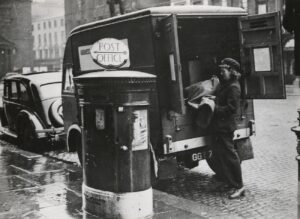Table of Contents

Branding Guidelines Checklist
Professionals know that a brand reaches its audience through many channels, and consistency of expression plays a major role in its effectiveness. From brochures and websites to annual reports and magazines, comprehensive guidelines ensure seamless brand communications. Here are examples of the identity building blocks and applications guidelines of a typical program.
Identity Building Blocks
- Positioning
- Personality
- Key messages
- Tone of voice
- Editorial style
- Primary logo/name style
- Logo
- Name style
- Clear space requirements
- Sizes
- Colour: preferred and variations; positive, reverse, 4-color, 1-color
- Correct and incorrect usage
- Secondary and supporting logos
- Business naming decision tree
- Supporting logo system
- Product names/logos
- Product naming decision tree
- Sub-brand logo system
- Tag line
- Graphic signatures
- Corporate typefaces
- Supporting elements
- Primary colour palette
- Secondary colour palette
- Photo or illustration style
- Typography style
Stationery
- Business cards, standard
- Business cards, dealer
- Business cards, international
- Letterhead, standard
- Letterhead, international
- Letterhead, monarch (executive)
- Envelopes, #10 business
- Envelopes, international
- Envelopes, monarch
- Envelopes, window
- Envelopes, mailing
- Stationery, co-branded
- Mailing labels
- Note pads
- Fax covers
- Internal Memos
- Press releases
- Microsoft® Office templates: Word®, Excel®, PowerPoint®, Visio®
- Report format
- Proposal format
Forms
- Purchase order
- Invoice
- Estimate
- Distribution
- Bill of lading
- Returns
- Checks
- Contracts
- Human resource materials: Employment application, Benefits
Phone Systems
- Greeting
- Voicemail style
- Acceptable “shorthand”
Literature
- Brochures
- Booklets
- Flyers
- Product spec sheets
- Customer case studies
- International formats
- White papers
- Executive briefs
- Product catalogues
- Sales catalogues
- International communications
- Stockholder communications
- Hard cover books
Packaging
- Product packages
- Product labels
- Hang tags
- Shopping bags
- Shipping cartons
- Point-of-sale materials
- In-store displays
- CD and DVD case and labels
- Video cases and labels
Publications
- Customer magazine
- Employee magazine
- Business partner/Dealer magazine
- External print newsletter
- External e-mail newsletter
- Internal print newsletter
- Internal e-mail newsletter
Signage
Exterior facility signs
- Skyline
- Monument
- Directional
- Parking
- Traffic control
- Site marker
- Building identification
- Corporate flag
Interior facility signs
- Lobby
- Directory
- Directional
- Floor identification
- Stair identification
- Room identification
- Workspace identification
- Restroom identification
- Roof signs
- Decals on glass
Vehicle Graphics
- Service vans
- Delivery vans
- Shuttle vans
- Tractor trailers
- Plant vehicles
- Security vehicles
- Landscaping vehicles
- Buses
- Train cars
- Ferries/Ships
- Containers
- Aircraft
- Blimps/Balloons
Uniforms
- Employee badges
- Visitor badges
- Contractor badges
- Security
- Shirts/ties
- Jackets
- Coveralls
- Lab coats
- Hard hats
- Service hats
- Seasonal uniform style
Exhibit Systems
- Trade show booths/exhibits
- Floor displays
- Posters
- Banners
Web and Interactive
- Site design and interface
- Web page templates
- Information design
- Content style and administration
- Corporate website
- Division/Group sites
- IT systems: call centers, order entry, etc.
- Employee intranet site
- Web advertising
- E-commerce site
- E-mail style
- Direct e-mail programs
- Interactive CDs
- Multimedia presentations
- PowerPoint presentations
Special Events (Print and Web)
- Sports sponsorship
- Co-sponsorship
- Olympic Team or Games sponsorship
- Charity sponsorship
Advertising
- TV advertising signature
- Print ads, Magazine
- Print ads, Newspaper
- Outdoor ads, Roadside
- Outdoor ads, Bus shelter
- Outdoor ads, Train station
- Vehicle ads, Bus
- Vehicle ads, Taxis
- Direct mail campaigns
- Banner ads, Web
- Co-op advertising
Branded Merchandise
- Hats
- T-shirts
- Sweatshirts
- Golf shirts
- Golf umbrellas
- Note pads
- Pens/pencils
- Keychains
- Mugs
- Tote bags
- Computer cases
- Stuffed animals
- Paperweights
Corporate Identity – Viewpoints
Executive summary:
- Corporate identity makes the organization’s strategy, structure, and vision visible.
- Every organization has a unique identity. A corporate identity programme enables that identity to be managed and projected to all of its audiences.
- In order to develop an effective identity programme, the builders of an organization must have a clear idea about what drives it – its vision.
- They must set up and sustain a structure which enables the organization both to project its identity to the outside world and live it internally.
Why do organizations need to develop a corporate identity?
Companies face challenges to their identity from all sides. These are the principal reasons why identity is becoming an increasingly important topic in company boardrooms.
- Companies are increasingly merging, especially across national boundaries. Leaders have to consider how to create a new corporation out of two old and frequently competing organizations with different and sometimes incompatible cultures.
- Products and services are becoming increasingly similar, which means that consumers make purchases on emotional rather than rational grounds.
- Organizations are forced through changing technologies, deregulation, or globalization to change the nature of their business and therefore, sometimes their identity has to demonstrate this.
What is identity?
Every organization carries out thousands of transactions every day: it buys, it sells, it hires and fires, it makes, it paints, it cleans, it promotes, it informs through advertising, the web and other media– and so on. In all these transactions, the organization will in some way be presenting itself – or part of itself – to the various groups of people with whom it deals. The totality of the way the organization presents itself can be called its identity. What different audiences perceive is often called its image.
Because the range of activities is so vast and the manifestations of identity are so diverse, the corporation’s identity needs to be actively and explicitly managed. Identity management, like financial management or information systems management, is a corporate resource which embraces every part of the organization.
Identity can project four ideas:
- Who you are
- What you do
- How you do it
- Where you want to go.
The four vectors:
Identity manifests itself primarily through three main vectors, which you can see:
- Products and services – what you make or sell – like BMW
- Environments – where you make or sell it – like Hilton Hotels
- Communications – how you advertise and otherwise promote your product – like Coca-Cola
And one which you can feel and can sometimes almost see:
- Behaviour – how you behave – to your employees and the world outside – like Orange or British Airways
The balance between these four is rarely equal, and a priority early on in any identity programme is to determine which predominates.
The central idea/vision:
The fundamental idea behind an identity programme is that in everything the organization does, everything it owns, and everything it produces it should project a clear idea of what it is and what its aims are.
Name/Logo:
At the heart of the visual identity is the nomenclature and identification system, and the way it is reflected in symbols, logotypes, and marks. The symbol is highly visible. Its prime purpose is to present the idea of the corporation with impact, brevity, and immediacy. It often becomes the focal point from which the whole identity is subsequently judged.
It is sometimes necessary to change the symbol in order to signify a change in direction.
Audiences:
The audiences of an organization are those people who come into contact with it at any time, in any place, and in any form of relationship. It is often assumed that the most important audience for any company are its customers. In a service business, however, employees are much the most significant audience because they transmit the identity of the organization to customers – so they have to live it. There are two groups of audiences – internal and external. Internal are staff and their families. External are shareholders, competitors, suppliers, partners (sometimes these can be the same), the financial world and opinion formers of all kinds. These audiences are not always separate and independent, to some extent they are overlapping.
Types of corporate identity:
The identity of most companies can be divided into three general categories: corporate, endorsed or branded. These categories are not mutually exclusive, and none is necessarily superior to any of the others. Each is appropriate in specific circumstances.
Corporate: This is where the organization uses one name and one visual system throughout all of its interactions. Because everything that the organization does has the same name, style and character, each part supports the other. Virgin is a high profile example of this type of identity. The name and identity of Virgin is not associated so much with what it does, but what it is; how it behaves and what it seems to stand for.
Endorsed: Most companies grow (at least partly) by acquisition. The acquiring company is often eager to preserve the goodwill (equity) associated with these acquisitions. Under an endorsed identity strategy, the parent endorses its subsidiaries with the corporate name and (sometimes) visual style e.g., Accor with Sofitel, Novotel, Mercure, Ibis and others.
Branded: Some companies, especially those in consumer products, separate their corporate identity from the identities of the brands they own, e.g., Unilever, Diageo and LVMH. The final customer identifies with the brand and other audiences of the corporation. Brands have names, reputations, life cycles, and personalities of their own, and they may even compete with other brands from the same company.
Starting and managing a programme:
No CEO wakes up one morning and says “let’s start a corporate identity programme”, there’s always a reason. The CEO and Chairman must have a clear idea of what they want an identity programme to achieve in the longer term.
- Is it part of a complete corporate turnaround?
- Is it to re-inspire, reinvigorate and create more cohesion internally?
- Is it to push up the share price?
- Is it to help integrate newly acquired companies or help culture change in a merger?
- Is it a response to competitive pressures?
When a programme is initiated, a senior individual within the organization must be appointed to monitor and manage it.
Consultants:
Organizations are rarely sufficiently objective, self-aware, or experienced to carry out all this work by themselves. They will need outside assistance from branding, identity or design consultants.
Working party and steering group:
As in every corporate activity, the identity programme needs a power base, financial controls and clear lines of authority. So a working party should be formed, reporting to a steering group.
The stages of work:
The basic building blocks of an identity programme are:
- Stage One – Investigation, analysis, and strategic recommendations
- Stage Two – Developing the identity
- Stage Three – Launch and introduction – communicating the vision
- Stage Four – Implementation – making it happen
Stage One:
The organization has to take a good, clear, objective look at how it is perceived by its various audiences, both internal and external, and how these perceptions compare with its aspirations. If the existing identity is perceived as fragmented, incoherent, unclear, old-fashioned and so on, there has to be agreement on the action required to change perceptions. Stage one ends with recommendations for action.
OPTIONAL:
Example – Repsol: an identity based on a vision
The Spanish oil company Repsol was formed in the 1980s from Istituto Nacional Hydrocarburos. The company was a state monopoly with low standards of service, old and badly maintained service stations and a plethora of names and identities. The central idea/vision emerged naturally from the company’s new positioning. Spain was entering the European Union (1986), and the company had to defend its position against competition from Shell, BP, and other global players. INH had to be revitalized and eventually privatized.
Repsol had the opportunity to become the admired model for a revitalized dynamic and democratic Spain. Repsol could become and be seen as the new Spain’s industrial and commercial flagship. This was the vision that was presented to and agreed by the board. The naming structure and visual identity followed from this brief. The name INH was abandoned in favour of one of the brands, Repsol, and a corporate identity structure was adopted in order to give the organization strength and coherence. A new design scheme was part of the programme of change.
Stage Two
Developing the identity:
Depending on the results of stage one, it may be necessary to change the identity completely including name and visual style (Acccenture), keep the same name but change the identity visually (BP) or just modulate it (Renault).
Changes of names and visual styles are expensive, time-consuming, and make clear signals to the marketplace that the organization is making a new promise or moving in a new direction. This kind of change makes a promise of changed performance, which has to be fulfilled. Never, ever, promise more than you can deliver. On the basis of the recommendations made in stage one, the consultants will develop an identity system based around either the corporate, endorsed, or branded models. The identity system will usually consist of a name (or names), mark or logo, main and subsidiary typefaces and colours. These will be shown in the form of applications in a wide variety of corporate materials – letterheads, brochures, websites, showrooms, products and so on.
Stage Three
Implementation/Electronic manuals:
The new identity has to be codified so that it can be used by everyone in the organization who needs it, and by relevant outside suppliers. Manuals are prepared which contain all the identity elements and show a variety of applications. In addition, the manual has to demonstrate the spirit that lies behind the organization.
Stage Four
Identity Programme Launch and Introduction:
If the new corporate identity programme is to be implemented successfully, it has to be launched with enthusiasm and commitment. The launch is the first major opportunity for the corporation’s leaders to present the identity as a significant corporate resource and to integrate it into the organizational structure.
Never trivialize it. Explain that the new identity is the outward and visible sign of change, and explain what that change means. Internal audiences want to know what, why, and particularly how it will affect each of them as individuals. External audiences only want to know why and how much.
Conclusion:
All organizations have an identity, whether they control it or not. A corporate identity programme harnesses and manages this resource in the corporate interest.
Corporate Features
1. Logo
A nice, clean logo should define a company or an individual online, no matter what.
2. Typography
Typography is either part of the logo, the company/individual name, or the overall online/offline theme.
3. Colors
No more than 2 colours. 2.
4. Brand
The sum of many variables in the life of a company (or individual). Something like: “When you say browser, you say Firefox” (you don’t have to agree with me on this subject).
5. Products/Services
Pick 2 or 3 products or services and make them good. And popular.
6. Community
Have a strong blog and forum community can only be beneficial for your brand.
7. Culture
History, live appearances, TV ads, fun.
8. Support
Offer (live) support and advice and forum discussion for items at number 5.
Boost Your Business Branding With A Slogan
Any form of business branding plan must involve the creation of a slogan. It is one of the basic elements necessary in building an effective brand campaign. A slogan typically consists of a short sentence or a phrase that serve to reinforce the business name or logo. In fact, many big time businesses have created highly successful marketing slogans that it has been recognized by the consumers as much as their name.
Slogan is often dismissed as an element for effective branding methods, which is also the reason even a potentially good business name fails to deliver. Its main purpose is mainly to enhance and boost the name or provide a tiny glimpse of what the brand promises to deliver. Even simple words or phrases can go a long way in helping your business to make more money online.
Impact of Slogan to Branding
Brand recall is the main purpose of creating a slogan. They are there to speak for the brand where images fail. This further enables the brand to create a more lasting memory in the minds of the consumers and enhances the market reach of the product.
Therefore, you need not just produce a creative slogan, but an intelligent one. The purpose is mainly to capture the consumer’s attention and produce interest about a given product. It enables your audience to stop and think about the possibilities offered by the brand. Depending on your marketing plan, you can utilize a slogan to appeal to either the needs, attitudes, or emotions of the consumers. Therefore, you are trying to compel them to take an action, which in this case is to purchase the product to avail of the benefits it offers.
Why is it such a potent part of your marketing and branding efforts, you may ask? Because it triggers the motivation of the consumers, then driving them into action.
Creating a Good Slogan
Due to the importance of the slogan in your business, it is best to assert careful planning into the process of creating a slogan. To achieve a good slogan, you must inform yourself of what the qualities of a good slogan are.
1. A good slogan is memorable. Since the purpose of a slogan is to increase brand recall and trigger buyer motivations, it must first be able to capture their attention and stay in their memory for a given period. Staying power is an essential factor in the business industry, so you have to be able to produce something that stays in the mind of the consumers when they go out to buy.
2. A good slogan produces images on the consumer’s mind. Most people produce images on their mind when they hear something. Hence, you can trigger the visual patterns of your customers by using the slogan. For instance, you can remind them about your company logo and create a stronger link between the two.
3. A good slogan drives people into action. Awakening triggers on the consumer’s part will help make them the decision to buy the product being represented.
4. A good slogan highlights the benefit of the product. This is tied up with the efforts of creating product distinction, which is to emphasize the benefits that one can derive from using a company’s products or services.
Advertising versus Business Slogan
Business owners must be able to differentiate advertising from business slogans, since they serve different purposes. The business slogan is more important since it concerns the brand identity. It impacts your distinction in the market as well as your business’s ability to earn money.
Meanwhile, advertising slogans are created for a specific marketing objectives and over a short-period of time. It is more concerned over influencing a consumer’s immediate reaction to a given product, while a business slogan reinforces the reputation of a company as part of its branding efforts.
Photo by Jeff Sheldon on Unsplash.




